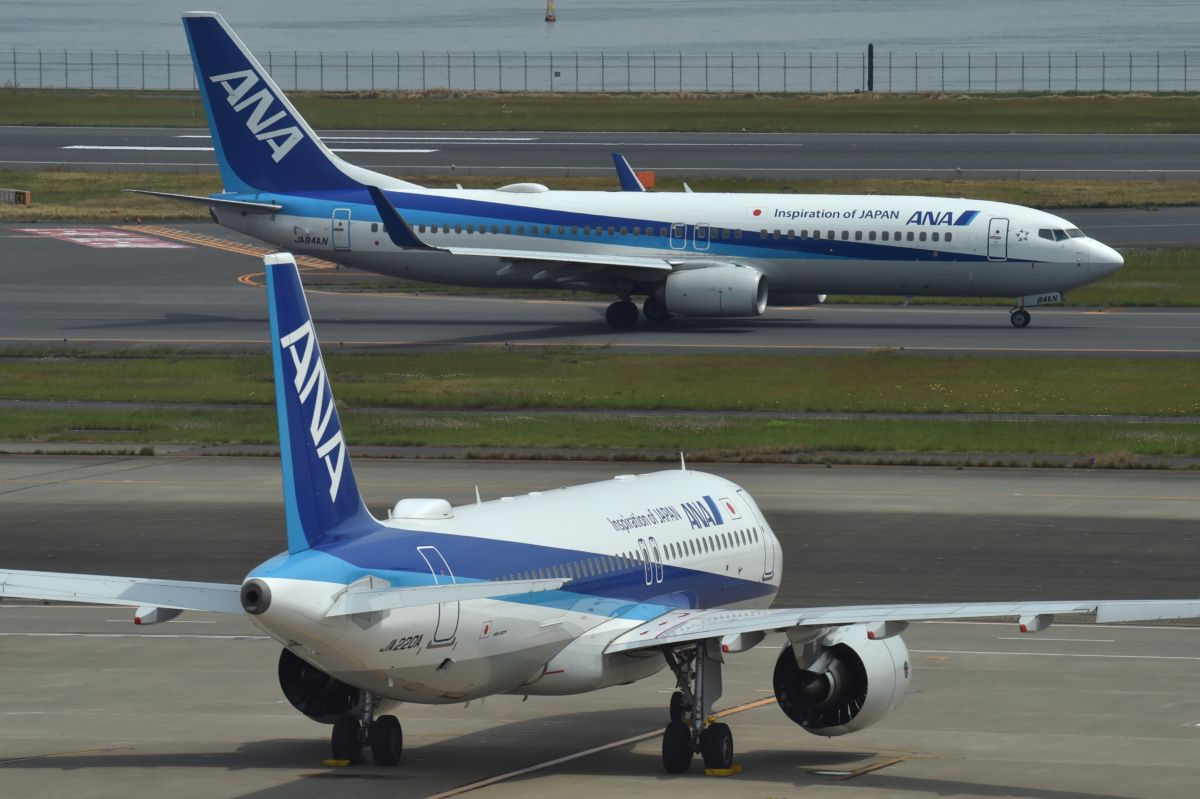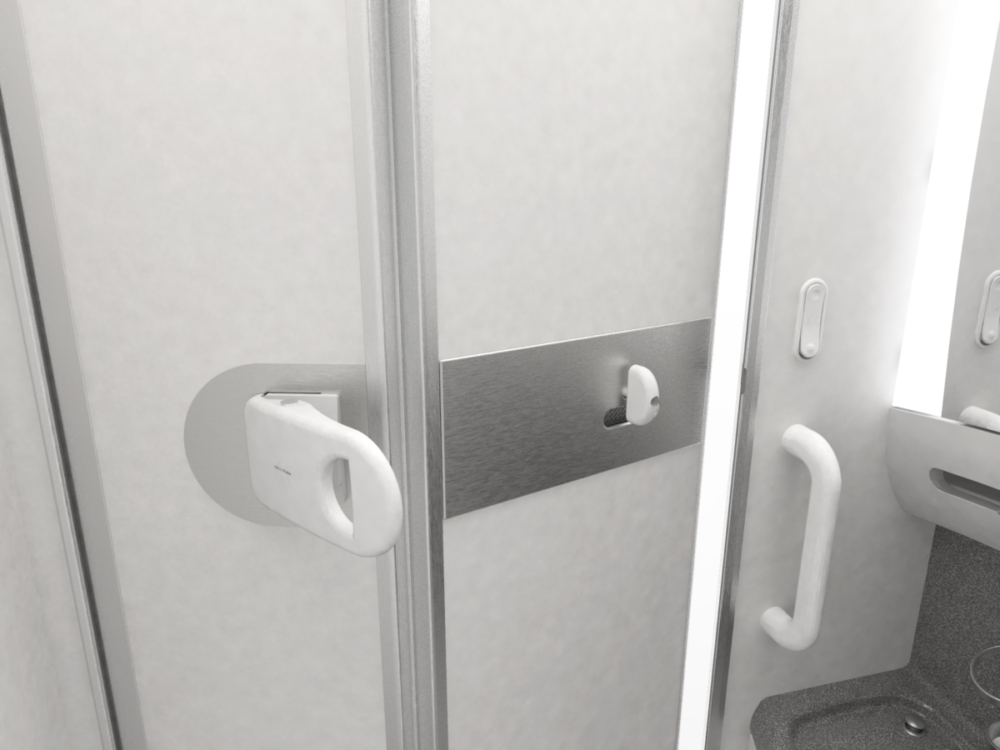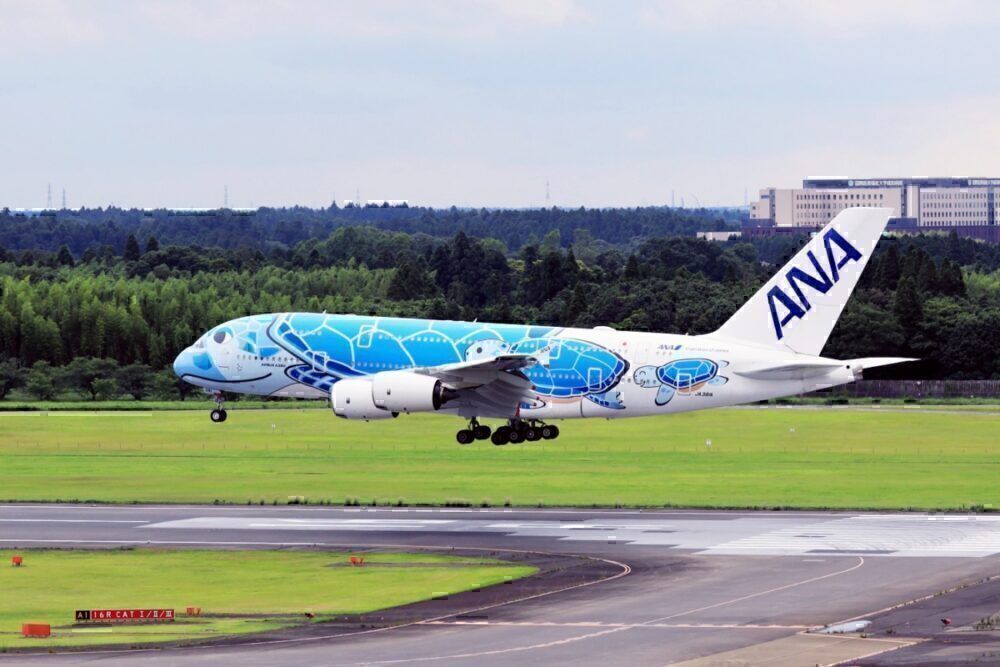Airline passengers are becoming hyper-aware of everything they come into contact with onboard amid the coronavirus pandemic. This awareness has resulted in one airline, All Nippon Airways (ANA), testing out a new way to minimize contact with the one amenity no one has ever wanted their hands on – lavatory doors.At the moment, the prototype lavatory door is at the airline’s lounge in Tokyo Haneda Airport.An ANA spokesperson told Simple Flying the prototype was invented in collaboration with JAMCO Corporation, a Japanese aircraft-component manufacturer. She added,
“While this product is still in its testing phase, it is one of the many ways ANA is improving the flight experience to reassure passengers of our commitment and efforts to cleanliness.â€
But how exactly is ANA ensuring these lavatory doors are completely hands-free? Let’s find out.
Stay informed: Sign up for our daily aviation news digest.
Elbows are the new hands
Instead of the silver latch on the bathroom door, ANA’s prototype adds a spring contraption to it. Passengers will use their elbows to press on the handle, opening the door. For a standard airline lavatory door, we use hands to toggle to slide and lock. Here, ANA has replaced the tiny toggle with a bigger-sized button that elbows can easily maneuver around.
ANA's innovation enables passengers to use their elbows to open and close the door, whether from the inside or out. This results in a completely hands-free experience with the lavatory door.
According to CNN, the Japanese airline is gathering feedback from users until the end of the month. ANA aims to implement it in more areas and aircraft if it garners positive responses.
ANA Care Promise
The new lavatory door is one of many new ways ANA is ensuring a cleaner and safer experience for its passengers. As part of its Care Promise program, the airline has redefined the entire passenger process. Passenger safety is the top priority, starting from the check-in area to onboard the plane.
According to the spokesperson, the Care Promise initiative is ANA’s “commitment to our customers to create a comfortable and enjoyable experience with an emphasis on safety and peace of mind, synonymous with flying ANA.â€
For instance, all ground crew must wear masks and face shields. Besides social distancing markers, there are disinfectants and hand sanitizers at the check-in area. Vinyl curtains are in place to minimize contact between customers and staff.
At the lounge, food items are packed individually. The airline has halted priority boarding, for the time being, allowing those sitting at the window seats to board first. Onboard, there are additional cleansing wipes provided. All aircraft also contain high-performance filters, to ensure constant air circulation.
Seeking billion-dollar funds
Unfortunately, ANA reported a billion-dollar loss recently, for the three months ended June 30th. It seems that an $8.8bn bailout from the Japanese government in April was not enough to weather the pandemic.
Currently, the airline is seeking additional funds from banks. Simple Flying previously reported that ANA is looking to obtain $4.7bn of capital.
In the meantime, ANA is trying several ways to earn income – from charging passengers for sightseeing flights, which helps to reduce maintenance costs of its larger aircraft, to establishing travel bubbles with several countries including Singapore and Hawaii.
What do you feel about ANA’s innovation? Do you think all airlines should jump on the bandwagon? Let us know in the comments.



